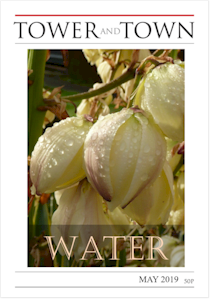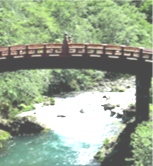

Tower and Town, May 2019 (view the full edition) (view the full edition)Water In Japan That’s the downside. The glorious upside is the hot-spring bath – the ‘onsen’. Of all the civilised things that man has invented, the onsen has to be one of the very best. As in every country, for hundreds of years few houses had their own bathing facilities; people went to the public baths. Natural hot springs make Japanese public baths, their onsen, a luxury of the highest order, with the accompanying cleanliness a centuries-old cultural norm. Everyone goes, even though every house now has its own bathroom. It’s a key social activity. A friend of mine, head of a secondary school, goes every day with his wife and daughter. And it’s a matrix for superb, beautiful architecture, with subtle use of rock and bamboo, light and shade, sound and silence. My best experience was a couple of days spent with my wife at an onsen hotel at the foot of Sakurajima, the active volcano rising out of Kagoshima Bay in the south of Kyushu. This onsen was open air, with just a few rocks separating its steaming waters from the open bay. And it’s not just humans who enjoy onsen: at the famous tourist spot of Nikko, the local monkeys have claimed some of the natural hot pools for their own evenings out.  Japan’s other glories are its temples and gardens, where water again plays an integral part in their carefully planned beauty. The Hasedera temple in Kamakura scintillates with water channels full of multi-coloured carp; at Tokyo’s Asakusa (pronounced ‘asaxa’) temple, the same. On every hillside, water is carefully channelled to prevent flooding, but wherever possible it also becomes a feature, a means for beautifying the environment and delighting in nature. It’s a complex relationship that the Japanese have with their water: a source of enormous danger but at the same time an opportunity to create great beauty and luxury. Hugh de Saram |